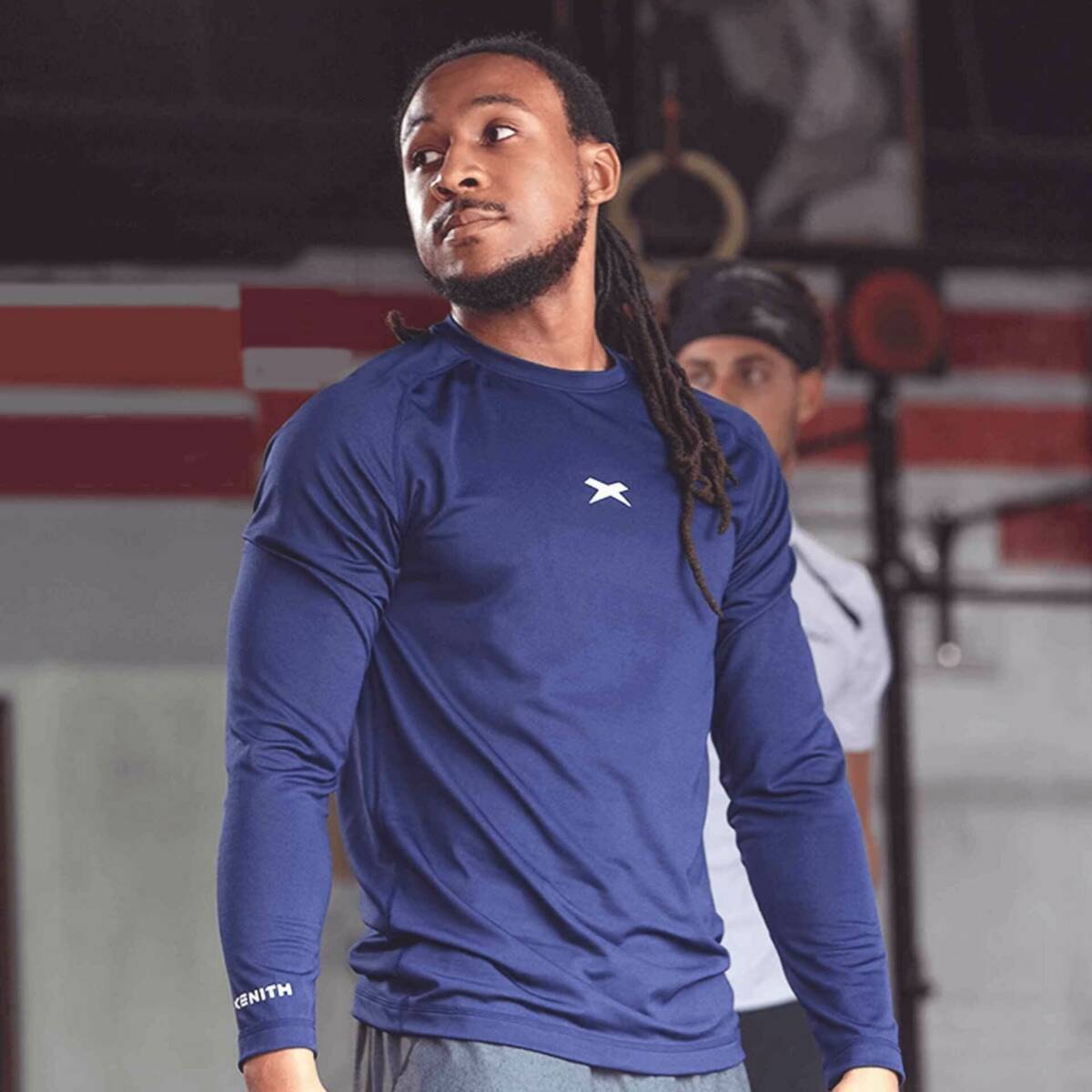
- Blog
- >
- Top 4 Lifts for Building Foundational Strength in Football Players
Top 4 Lifts for Building Foundational Strength in Football Players

April 16th, 2019
Keenan Crow
An athlete’s performance on the field starts long before they strap on their helmet. Building foundational strength is critically important for all athletes, especially football players as they advance in the game.
So, how do you build foundational strength?
Below, we’ve outlined the top four lifts for building foundational strength in football players. Many of these moves are compound exercises requiring proper form, so we recommend performing them carefully to avoid injury. Start with a weight you feel comfortable with, then gradually add more as you improve and gain confidence.
The Deadlift

Momentum Shorts and Foundation Badge Tee
The deadlift is one of the most versatile and effective lifts for the entire body. From a conditioning perspective, the deadlift builds strength and size in a number of muscle groups, including the lats, upper back, lower back, glutes, hamstrings, biceps, and forearms. The deadlift’s hip-hinge movement pattern increases hip explosiveness. Greater explosion through the hips benefits any athlete on the field when they block, tackle, or engage, providing power through contact. A great example of this is an offensive or defensive lineman coming up out of their three-point stance to engage the player in front of them.
The Squat

Momentum Training Tee and Momentum Shorts
Like the deadlift, a strong argument can be made that the squat transfers most effectively into the game of football. Squats build strength and power in your legs, core, and even upper back & lats. Those strength gains increase power and frequency of leg drive which improves an athlete’s speed and ability to run through contact whether they are a running back breaking a tackle, or linebacker making one. Lastly, squats prevent injury in the knees, which are one of the most susceptible areas for injury in football. Your knee joints and ligaments will acclimate to the stressors of heavy squatting and be able to withstand more pounding on the field.
The Bench Press

Foundation Badge Tee and X-Camo Gaiter
The bench press builds strength in your chest, shoulders, triceps, and secondarily in the lats and upper back which act as stabilizers when you move the weight. The bench press will improve power in any blocking or hand punching scenario; an offensive lineman engaging a defender on a block, or a cornerback pressing a wide receiver.
The Pull-Up

The pull-up is the most accurate measure of relative strength for an athlete. Activating the lats, back, arms, and forearms, the pull-up will keep the shoulders healthy and ready to deliver a big hit. The strength gained from the pull-up is used at all positions on the field as athletes push, pull and fight their way to the next big play.
Although football players come in all shapes and sizes, a foundation in strength is crucial to top performance at all levels. Adding these four lifts to your training will keep athletes injury free, build power and explosiveness in all facets of the game, and help improve overall performance on the field.

